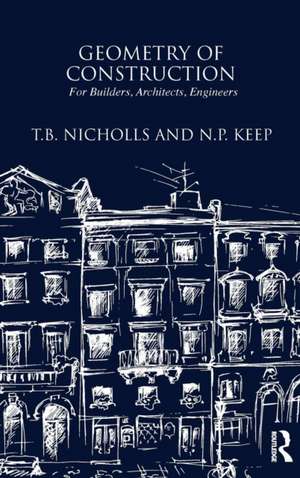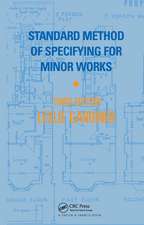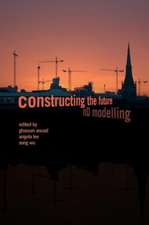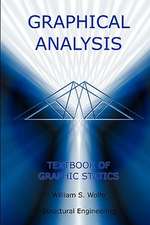Geometry of Construction: For Builders, Architects, Engineers
Autor T.B. Nichols, N.P. Keepen Limba Engleză Hardback – iul 2009
Preț: 1006.60 lei
Preț vechi: 1227.57 lei
-18% Nou
Puncte Express: 1510
Preț estimativ în valută:
192.67€ • 209.36$ • 161.95£
192.67€ • 209.36$ • 161.95£
Carte tipărită la comandă
Livrare economică 21 aprilie-05 mai
Preluare comenzi: 021 569.72.76
Specificații
ISBN-13: 9781873394892
ISBN-10: 1873394896
Pagini: 240
Dimensiuni: 156 x 234 x 22 mm
Greutate: 0.64 kg
Ediția:1
Editura: Taylor & Francis
Colecția Routledge
Locul publicării:Oxford, United Kingdom
ISBN-10: 1873394896
Pagini: 240
Dimensiuni: 156 x 234 x 22 mm
Greutate: 0.64 kg
Ediția:1
Editura: Taylor & Francis
Colecția Routledge
Locul publicării:Oxford, United Kingdom
Public țintă
Professional and Professional Practice & DevelopmentCuprins
Contents: Lettering for Working Drawings; Some Definitions; Bisectors and Perpendiculars; Angles by Bisection; Angles and Triangles; Construction of Triangles; Scale of Chords; Quadrilaterals and Parallel Lines; Construction of Quadrilaterals; Regular Polygons and their Construction; The Circle; The Construction of Scales; Enlargement by Squares; Orthographic Projection; Arrangement of Projections; Isometric Projection; Oblique Projection; Axonometric Projection; The Projections of a Circle; Orthographic Projection: an Example; Isometric Projection: an Example; Axonometric Projection: an Example; Oblique Projection: an Example; The Circle in Mouldings; Arch Curves; Mouldings; Tangents to Circles; Construction; Circles in Contact; Tangents to Circles: External and Internal; Inscribed Circles; Foiled Figures; Continuous Curves; Loci: Locus of Centres; Fret Patterns; Patterns Based on Squares; Patterns Based on Circles; Patterns in Circles; The Ellipse as a Plane Figure; The Parabola and Hyperbola; Conic Sections in Mouldings; Approximations to Ellipse; Areas; Calculation of Areas; Calculations of Volumes; Similitude; Entasis of Column; Spiral Curves; Ionic Volute; Geometrical Solids; Projections of Solids: Cube: Triangular Prism: Hexagonal Prism: Cylinder: Square Pyramid: Triangular Pyramid: Hexagonal Pyramid: Cone : Auxiliary Projection; Sections of Solids; The Ellipse as a Conic Section; Projection of Points; Projection of Lines; Projection of Planes; The Lengths of Lines; The Oblique Plane; Roof Surfaces; The Parabola as a Conic Section; The Hyperbola as a Conic Section; Cuttings of Sphere; Developments; Interpenetration; Intersecting Mouldings; Pediment Mouldings; Tracery; Tracery Panels; Geometrical Tracery; Developments of Sphere; Hemispherical Dome; Barrel Vaulting; The Helix; Shadow Projection; Index
Descriere
A guide to the technical geometry of the construction industry. Beginning with the basics of technical drawing, it provides a series of complex exercises to explain what the reader needs to know about geometry. It enables the student to progress from basics such as the circle and construction of scales, to some of the most complex challenges.















